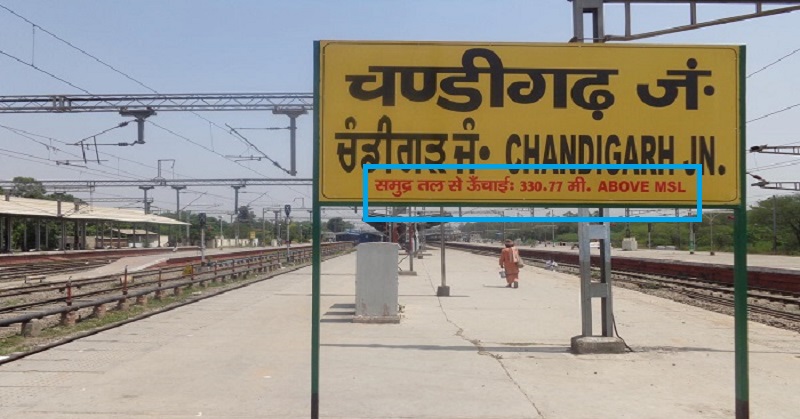Go to any railway station in India. Go to the far end of platform on either of the two directions. You will come across a board – made of stone – mentioning the name of the station in English, Hindi and the local language of the state where the station is located. The board faces the railway track so that passengers and the train driver can read it easily.
But besides containing the name of the station, the board also carries an additional detail – MSL or Mean Sea Level. (You can see the MSL in the board above.)
ADVERTISEMENT
But what is this MSL, why is it there and how does it help?
Elevation from the Sea Level is a common standard of measurement of the height of land from a level that is considered uniformly equal around the earth. Since the level of the sea is the same anywhere on earth, i.e. or 0 (zero), the measurement of the height of land is done keeping sea level as base.
ADVERTISEMENT
This is why every major city, township, hill station, mountain, pass, or other sites of geographic or topographic importance has their own height from the sea level. So when you read in books that the height of the Mount Everest is 8,848 metres, you are being given the height from the sea level.
Okay, so travellers and mountain climbers can benefit from the information.
Advertisment
How do railway drivers benefit from it?
Simple. A train in India covers great distances across varied geographic landscapes and terrain that might not be the same at any two consecutive points. For example, a train travelling from New Delhi to Shimla moves from 225 metres above mean sea level to 2,206 metres above mean sea level.
The train driver and the guard can measure the gradient or slope between two stations with the help of the mean sea level. This helps the driver and the train engineers to calculate the speed to be maintained between the stations. For instance when moving to a lower elevation, the train will have to factor in the slope and braking. Elevation is also mentioned on railway bridges.
ADVERTISEMENT
But do the train drivers need this information to run a train?
Not necessarily. The advent of technology has made it easier to operate trains. The speed of a train between two stations is now set as per a plan that takes into account traffic on a given line, distance, weather, time of the day as well as elevation.
Also read- 11 Indian Railway Train Horns And Their Meaning
ADVERTISEMENT
